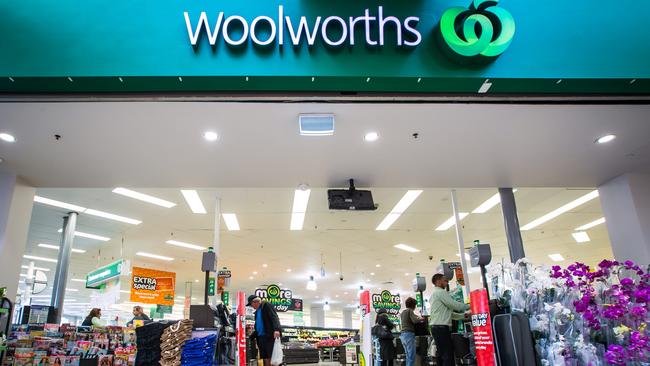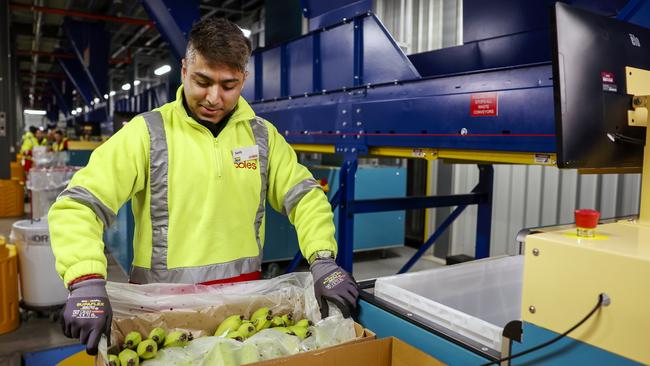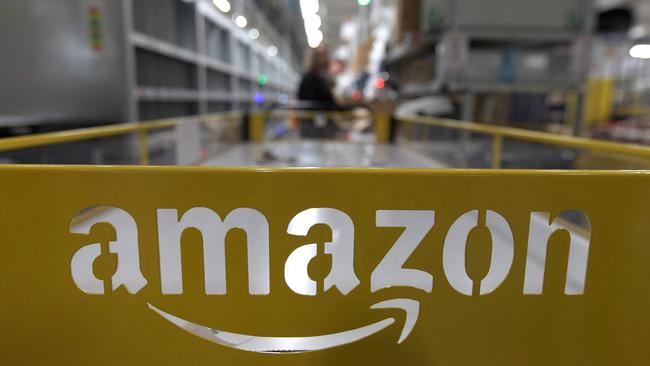
There’s a multitude of reasons for this, including a lack of management vision in the past, and importantly lacking access to the big licks of capital needed to grow.
But Metcash’s business model as a wholesaler – meaning it doesn’t own the supermarkets or the end customers – has allowed Coles and Woolworths to flourish over the past two decades. Ultimately, Metcash is selling into a highly fragmented IGA distribution channel. And even with more than 1200 bannered IGA stores, that hasn’t provided the competitive lead needed to take on the big two.

The rise of German major Aldi in the Australian supermarket landscape has come almost entirely at the expense of Metcash and other independents. Aldi’s integrated business model and deep pockets have given it a platform and the cash to generate growth.
According to the ACCC’s interim supermarkets pricing report, Coles and Woolworths have expanded their share of take-home food and grocery sales by a combined 3.7 percentage points since 2007. Woolworths accounts for 32.5 per cent, while Coles is 24.8 per cent, Gina Cass Gottlieb’s ACCC says.
Aldi has grown from just under 3 per cent to more than 8 per cent today. Metcash has fallen from 16.6 per cent to less than 6 per cent. Some of this has gone to the broad category of “all other retailers” but most of the losses have been to Aldi and its big rivals.
Even so, the ACCC considered Aldi as providing only a “partial constraint” on Coles and Woolies, given its smaller store footprint and limited product range.
Coles, headed by Leah Weckert, last year spent $1.4bn on capex which goes to building warehouses, buying trucks, technology and opening new stores. Woolworths, with new CEO Amanda Bardwell, spent nearly $2.2bn.

Metcash’s capex spend was $340m, including on its Mitre 10 hardware chain. The retailer has repositioned under chief executive Doug Jones and is planning 26 store openings this year, while helping to fund the upgrade of another 120 IGA stores.
So too, the launch of its IGA Rewards loyalty program, which now extends to two thirds of the IGA banner network, keeps it in the game.
The capacity to invest shows the power of the integrated business model that politicians including the Nationals and the Greens have called to be broken-up. The combination of warehousing, distribution and retailing are integral to building economies of scale and keeping prices down.
The real profits for supermarkets are made from incremental savings at the back end rather than on the shop floor. And that’s what keeps shoppers coming back.
Those calling the loudest for break-ups have offered little evidence how consumers would be better off by losing the economies of scale that come with vertical integration.
The ACCC’s supermarkets inquiry interim report didn’t uncover any major smoking guns around supermarkets and pricing, apart from the regulator declaring the Australian market is highly concentrated with two players making up nearly 60 per cent.
While Woolies is the biggest, figures from brokerage Jarden show it is the most vulnerable to disruption from rivals and non-supermarket players.
More than a third of Woolies customers also shop at Coles, and a whopping 40 per cent of its customers also shop at IGA.

The equivalent cross-shopping for Coles is 17 per cent going to Woolworths and 30 per cent to IGA. Significantly, customers of the big two retailers are also regular shoppers of goods they would otherwise buy from supermarkets at places like Chemist Warehouse, Bunnings, Petbarn, Priceline and new digital entrant Amazon.
Key concerns covered promotional activities, access to pricing information, shrinkflation and data privacy. The more sensational stuff is likely to follow in the final report in February, when the ACCC considers things like profit margins over time.
Significantly, the ACCC said the like for like comparison of profit margins between local players and supermarkets in other countries is not always meaningful given the substantial differences across markets. The final report also plans to look in depth at pricing strategies, accusations of gouging, loyalty programs and whether supermarkets are flexing their muscle in the supply chain.
The interim report will provide a foundation for public hearings in October and November, but the ACCC scooped itself with the high stakes legal action this week, accusing Coles and Woolies of giving false discounts while inflation was running hot. Coles plans to defend the action, while Woolworths is considering its position.
The ACCC is also missing the opportunity to properly consider the arrival of Amazon as a serious player in the supermarket space. The regulator like most politicians dismisses it as a competitive threat, which is either selective or extremely short-sighted.
On Friday afternoon this columnist was able to build out a basket of big brand non-perishable goods including cereal, pasta sauce, soft drink, laundry liquid and toothpaste and toilet paper all while sitting in the newsroom.

Each item from Omo laundry liquid, to Kellogg’s Sultana Bran was priced between 10 per cent and 15 per cent cheaper on Amazon from the same item sold online by Coles or Woolworths. This came with a delivery option into Sydney’s suburbs by Saturday morning.
The one exception to the order was Coke Zero which was only available on Amazon in packs of 20 versus packs of 24 at the supermarket brands. (The wait for the Coke was until Wednesday at Amazon, but if I could hold out, it still worked out on average at 85c a can versus 96c at Woolworths).
From almost nothing in 2017, Amazon is now selling around $5.5bn worth of merchandise goods – products ordinarily found in a supermarket or discount department store. This will easily pass $10bn by the end of the decade or even earlier and potentially overtake Metcash’s non-liquor supermarket sales.
The underscores the major shift underway in retailing led by digital.
It shouldn’t come as a surprise that this growth requires heavy investment and patience to win. And Amazon as one of the world’s biggest companies has the ability to reshape markets it chooses to compete in. Already it has six massive warehouses, called customer fulfilment centres, across Australia’s mainland capitals and Melbourne will soon get its second one. However, Amazon’s Australian merchandise revenue rose an estimated 20 per cent last year.

Although Amazon is still a newcomer to Australia, the biggest competitive pressure it has put on the big retailers is forcing them to lift their game on digital experience and delivery. This has prompted the likes of Coles to spend up big, building a fully automated and robotic warehouse in western Sydney. The supermarket major is weighing up other sites for smart warehouses, including Melbourne, to bolster its home delivery experience.
In other global markets including the US, Singapore and India, Amazon has launched a fresh food service alongside its non-perishable goods and any shift into that space would shift the market here yet again.
Former Woolworths boss Brad Banducci points out that with its new warehouse network, Amazon can get to 84 per cent of Australian houses within a day.
“The key metric is not how many stores you have, but how you can service your customers. Customers are looking for convenience, and Amazon retail does provide that convenience,” Banducci says.
An ACCC survey of more than 21,000 consumers put “convenience” miles ahead of “value” when they made their decisions on which supermarkets to shop at. Coming in a close third behind value was a “wide range of products”. Other factors like opening hours, ease of access, quality and loyalty programs rated highly.
The message from this? Consumers are far more savvy than politicians are giving them credit for.
eric.johnston@theaustralian.com.au






The story of Australian supermarket competition is the failure of former number three player Metcash/IGA to take advantage of its challenger potential and make any inroads into the dominance of the big two.